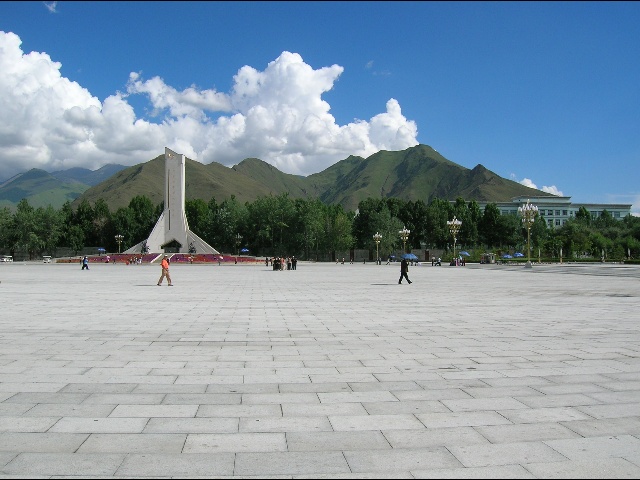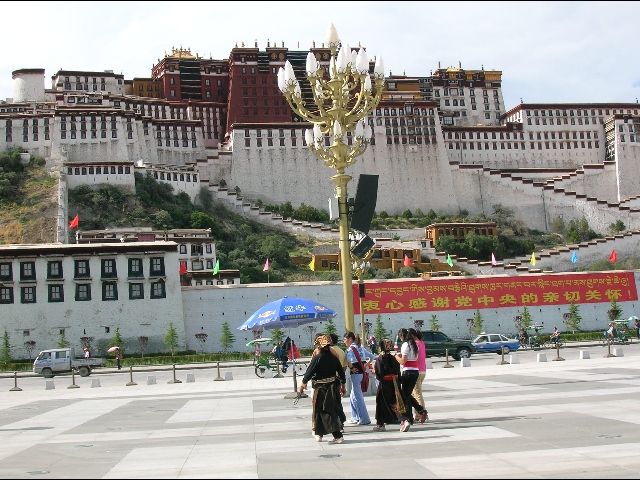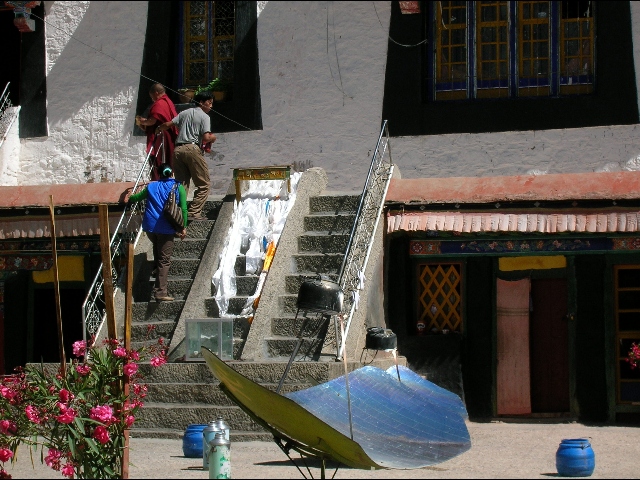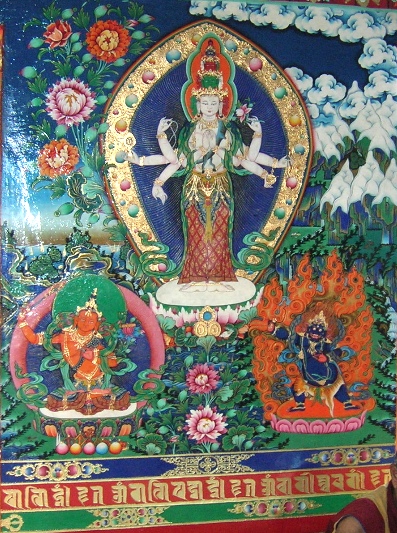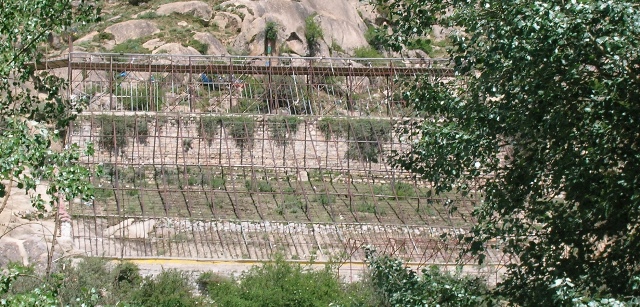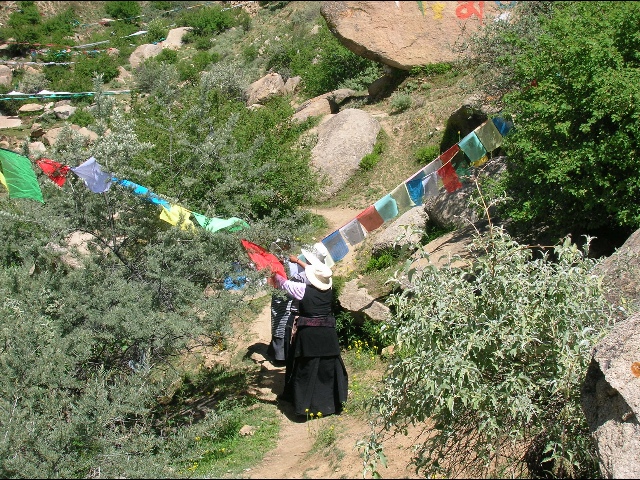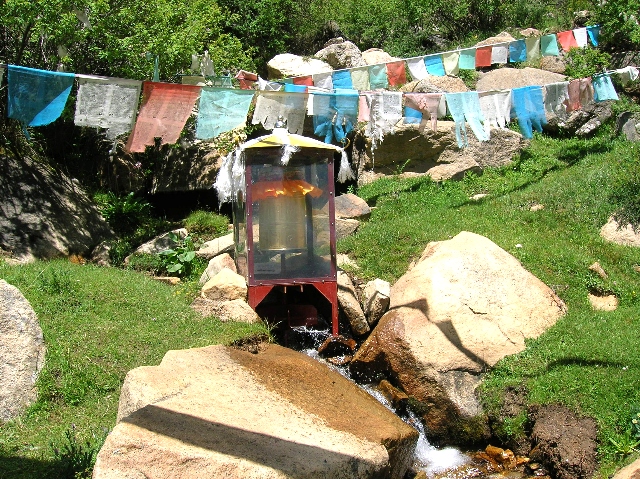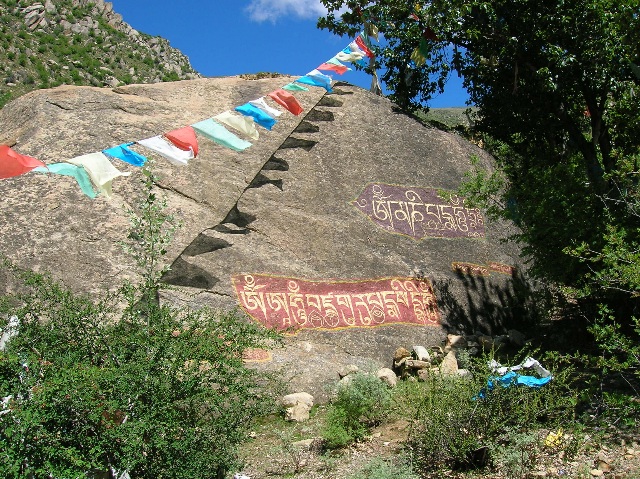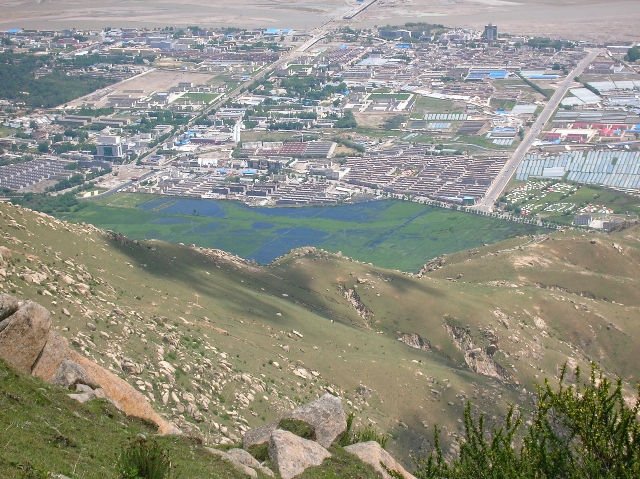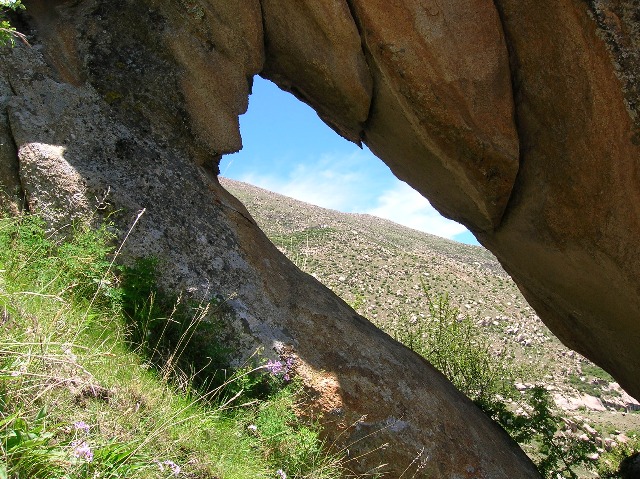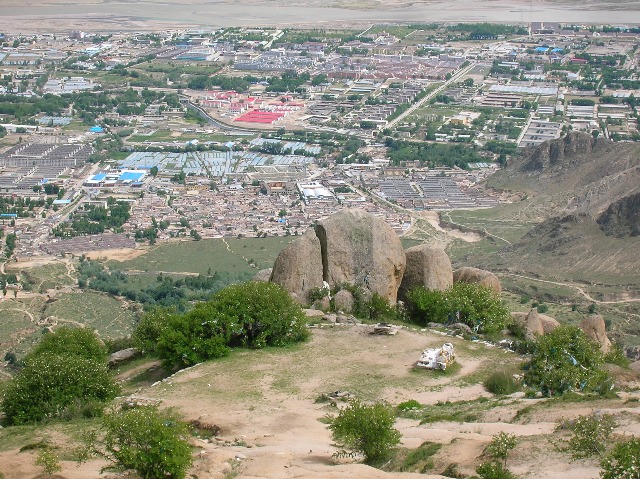| Prelude |
Day 5: DrepungAfter the usual kora of the Jokhang temple and my morning prostrations I get a taxi back to the Potala, arriving around 9 a.m. 9 a.m. is really quite early here, since we are in the same time zone as Beijing 1,600 miles to the West. I am hoping to connect to the Lhasa Tai Chi community, if there is one. Yesterday I noticed a large open square opposite the Potala, with a beautiful park beside it, that in China proper would be packed with Tai Chi players every morning.
On the other hand, I am also coming to realize that the conventional picture of how things are here supplied by Buddhist centers and emigré groups bears very little resemblance to the present situation in Lhasa.
For instance, turning back toward the Potala for the next photo we see a group of friends in their twenties, some Tibetan, some Han Chinese, some in traditional dress and some in fashionable Chinese clothes, some saying mantras and telling beads, some flirting, others reading the paper, walking harmoniously together to the market. Even the most religious Tibetans own Chinese-made cell phones and electric bikes and are very happy to have them (yesterday doing the kora around the Jokhang I saw an old, wizened Tibetan woman interrupting her mantra to take a call on her cell phone: the moment was too personal for a photo.) At the same time, many of the Chinese who are here were either drawn here by a deep spiritual interest or have since developed one. What is happening here is more of a synergy than the oppression of one culture by another. This is a good place, and even as a Buddhist I can't honestly say I think it would have been better if the Chinese had not taken over. Of course the repression and persecution during the Maoist era were appalling, but the point that often gets missed is that the Chinese did not spare their own religion or their own history any more than they spared the Tibetans': in both countries they were trying to totally re-make a feudal society from the ground up. I am in the neighborhood of the street with the hair salons, so I decide to swing by out of 'curiosity'. However, I have difficulty finding the place again and so have more and more difficulty pretending to myself that my motivation is casual - I'm walking in the heat of the day, the sun frying my brain like a mad dog or an Englishman, and after a while I have to ask myself why. Finally I realize why I'm having trouble finding it - even though it's now noon, all the beauty shops are still closed, so I don't recognize the street. Hmmm - I guess they must do a lot of late-night business… I take the bus out to the Drepung monastery on the extreme outskirts of town. We pass through an industrial district, and then past a truck-farming area where a lot of the tropical fruits and vegetables in the marker are grown. The truck farms are tended by Khampas - tall and proud warriors who are master horse - and motorcycle-riders and live in nomad tents (many of them, incongruously, carrying corporate logo advertising) I know the Khampas from previous trips to Western Sichuan: on my trip up the Yilongshi valley to Mount Gongga they would think nothing of riding a motorcycle over a canyon on a 'bridge' consisting of a six-inch plank, with an overweight and inexperienced passenger (me) and his fifty-pound pack riding pillion. They walk tall, fear nothing, and carry weapons whenever possible just like Western cowboys of the previous century. Just like Western cowboys they seem to be doing a job not entirely worthy of their macho, but macho is very culturally relative. I have no idea how macho growing vegetables is here, but did you know that the job of herding cows in India is associated with the Gopis, who are basically nothing but a gaggle of lovesick adolescent girls? I will see the Khampas later in a more fitting role, using their motorcycles to evacuate a group of Indian tourists from a pathless mountainside in a storm. The closest bus stop is a mile away from the monastery and a couple of hundred vertical feet below it, and is now the site of a Nissan dealership. The dealership itself is very smart, but the effect is spoiled by all the herds of cows and yaks that constantly thread their way through the parking lot.
The next photo is actually from Chengdu but could as easily have been from Lhasa. It's the parking area outside a typical lower-middle-class market, and every single vehicle of the hundreds in the shot is electric. Later on in the trip, I am to see nomads carrying and charging solar panels on their yaks. But I digress…
Chenrezig, resolved not to become enlightened until all the others had succeeded, promising to assist them all in their task and to be the servant of any being wishing to attain enlightenment, anywhere in the universe. He would both teach them and put questions on their behalf to the Buddhas, as humans often find it difficult to formulate their enquiries clearly. Feeling great compassion for all beings, he made many journeys into their various domains of existence, from the highest realms of the gods to the most pitiful hells. The more he saw of the confusion and suffering that predominated everywhere, the more he longed to be of help. He prayed to the Buddhas, May I help all beings. Should I ever tire of this great work, may my body be shattered into a thousand pieces. Subsequently he visited the worst hell (avici hell) and liberated as many beings as were receptive to his teachings. Progressively he worked his way up through the worlds until he reached the deva realms. Surveying the universe, he saw that although he had released thousands from the sufferings of the three lower realms - animals, spirits and hell-beings - thousands more new entrants were pouring in to take their place. Distressed by this and despondent, his resolve waned and he flew into a thousand pieces, like the seeds of a pomegranate. He cried out to all the Buddhas who, like a fall of snowflakes, came to his rescue and made him whole again through their beneficent influence. Thereafter, he had a thousand arms and nine heads, to which Amitabha Buddha added a special head along with the blessing of his higher wisdom. Then Bodhisattva Vajrapani added a wrathful head symbolising the special powers of all the Buddhas. This is why Chenrezig is sometimes depicted with a thousand arms and eleven heads. I have been identifying a lot with thousand-armed Chenrezig recently: I feel that I do my absolute best to help but that people (friends, students, ...) at the last minute refuse to accept help and go back to the familiar misery they had before. I am obviously confusing compassion, control, responsibility, and free will. Hopefully my head will explode some time soon and we can all relax. I escape from the maze-like temple complex (in which I was feeling more and more trapped) out onto the hillside to the left. I pass a giant steel frame, eighty feet high and more than three hundred wide, on which a tanka (sacred tapestry) is displayed once a year for a festival.
I find myself in a grassy glade through the middle of which runs a stream.
Soon the path leaves the valley and heads up to the right.
The walk is exhilarating though very hot: the views of the Lhasa valley just keep getting better and better, and eventually I find a ridge crest from which I can see the whole West of Lhasa The rice paddies, which are very extensive (almost a quarter of the area of metropolitan Lhasa) are above the ridge crest on the left side, the field where the Khampas have their tents is also just above the ridge crest to the right of a large road, and the greenhouse polytunnels are next to the Khampa field and a little further out, again to the right of the road.
As I climb further I come upon a flattened area with a large lama's throne made out of stone and draped with many offering scarves:
I noticed both in Ladakh and in Western Sichuan that lay people are generally more devout and more committed to their practice than the monks are. They are not obliged to practice and have nothing to gain from it on the material plane, so if they practice it is because they really want to. In fact most of the pioneers of Tibetan Buddhism, including Marpa, Milarepa, and Padmasambhava, lived as lay people. In my whole time in Tibet I never see a single monk doing any kind of spiritual practice in a monastery (I did see a nun doing some very powerful practice, but that was in a monastery kitchen where she had kind of a 'Cinderella' role). Mostly the monks hang out, eat and drink, collect donations, and supervise building projects. I can sympathize if the Chinese thought there were too many idle mouths to feed. |

